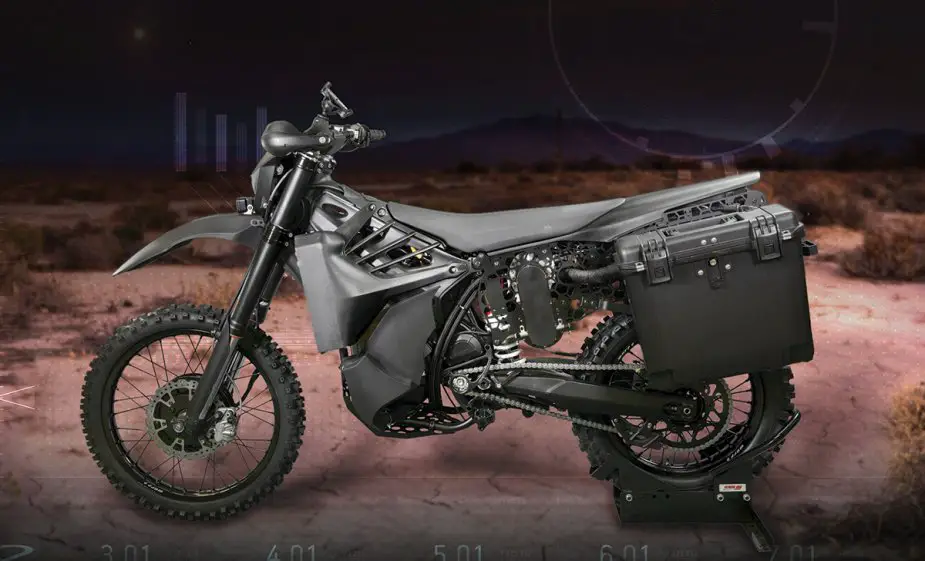Logos Technologies showcased for the first time at AUSA its SilentHawk, an all-wheel drive, hybrid-electric motorcycle. Logos Technologies was recently awarded a second Phase II SBIR (Small Business Innovation Research) contract from the Defense Advanced Research Projects Agency (DARPA) for further optimization of the motorcycle’s design.

The Logos SilentHawk (Credit Logos Technologies)
SilentHawk is an all-wheel drive, hybrid-electric motorcycle designed to transport troops over rough terrain and behind enemy lines with minimal noise to reduce chances of detection. The system combines the all-electric RedShift MX racing motorcycle, produced by Alta Motors, with a front-wheel drive system and multi-fuel genset range extender developed by Logos Technologies.
“In ‘silent’ mode, when the range-extension genset is off, SilentHawk is about as loud as a normal office conversation,” said Dale Turner, SilentHawk program manager. “When the rider is out of harm’s way, and the range-extension system is engaged to charge the motorcycle’s propulsion battery and to provide auxiliary power for equipment, it’s still only as loud a vacuum cleaner.”
SilentHawk weighs 350 pounds, has a range of 170 miles and can run on multiple fuels, such as gasoline, JP-5, JP-8, Jet-A1, propane and AVGAS. Logos Technologies began initial work on the motorcycle under a Phase 1 SBIR contract in February 2014. Ten months later, the company was awarded Phase 2 funding, which led to the development of the current hybrid-electric prototype.
With the second Phase 2 award, Logos Technologies is now set to produce two new SilentHawk prototypes:
An all-wheel drive model without the hybrid range-extender and an all-wheel drive model with user detachable hybrid range-extender
The purpose of two prototypes is to expedite development of a field-ready system. Logos Technologies plans to use the model without the range-extender to optimize the motorcycle’s front-wheel drive system. That system would then be integrated with the modular range-extension system to create an operational prototype, ready for field evaluation.
“Our goal is an operational prototype with a modular architecture, which would enable the user to configure it with or without the range-extension system to meet specific mission requirements,” Turner said.














